Find Help
More Items From Ergsy search
-
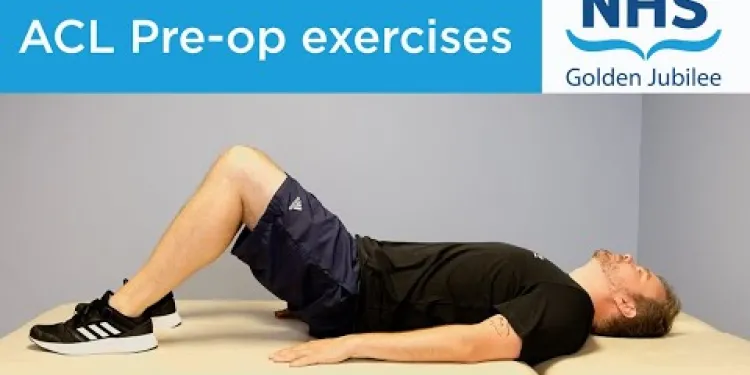
ACL pre-operation exercises
Relevance: 100%
-

ACL exercises post-operation
Relevance: 58%
-
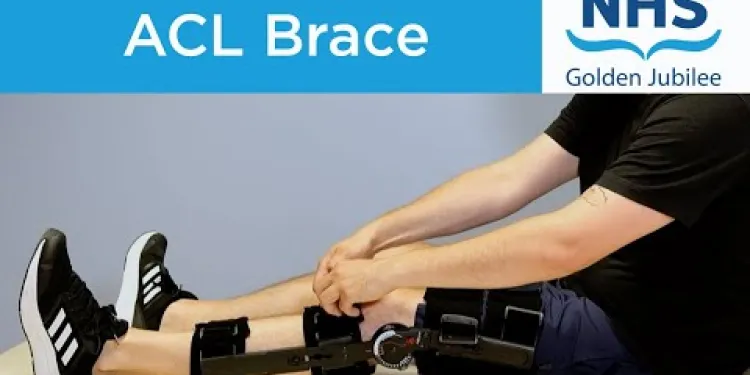
ACL Brace
Relevance: 50%
-

Neck Exercises
Relevance: 22%
-

Neck Exercises
Relevance: 22%
-

Shoulder Exercises 1
Relevance: 22%
-
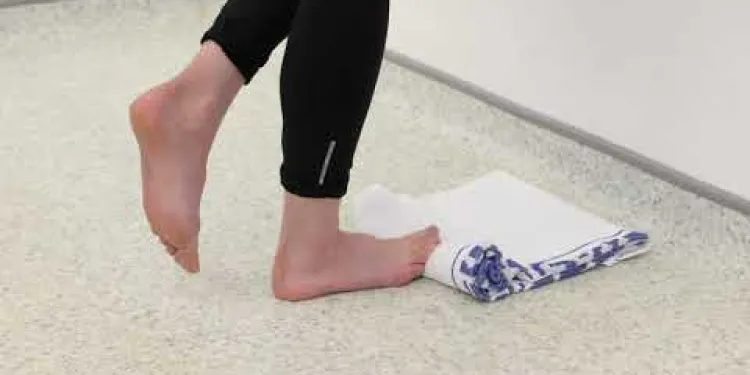
Plantar Fascia Loading Exercise (High Load Exercise)
Relevance: 21%
-

Facial exercise programme
Relevance: 20%
-
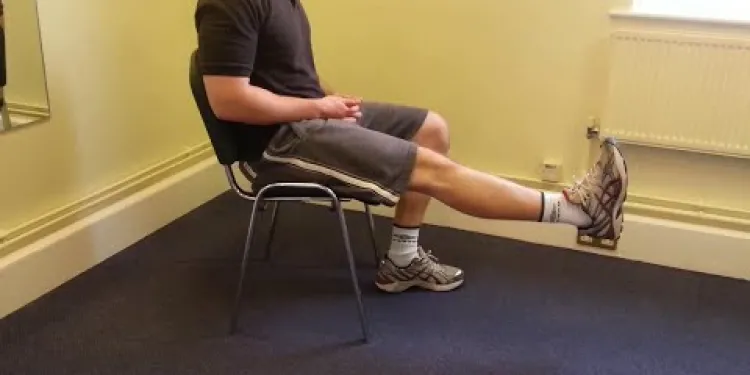
Knee Care Exercises
Relevance: 20%
-

Exercise in patients with a neuropathy
Relevance: 20%
-

Neck Care Exercises
Relevance: 20%
-

Is it safe to exercise with a cold?
Relevance: 20%
-
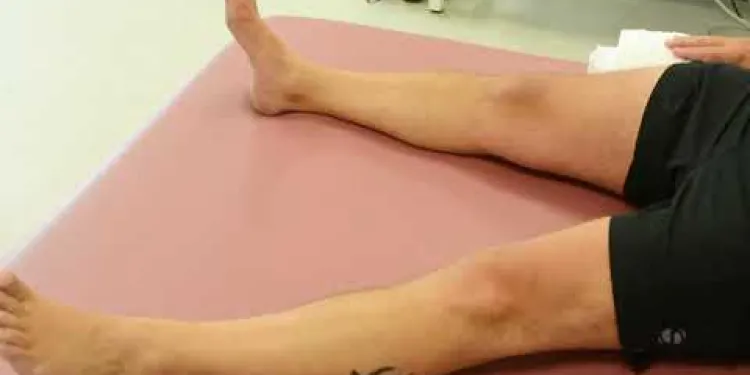
Joint School - Hip Exercises
Relevance: 19%
-

Joint School - Knee Exercises
Relevance: 19%
-

Will I be able to engage in physical exercise?
Relevance: 19%
-
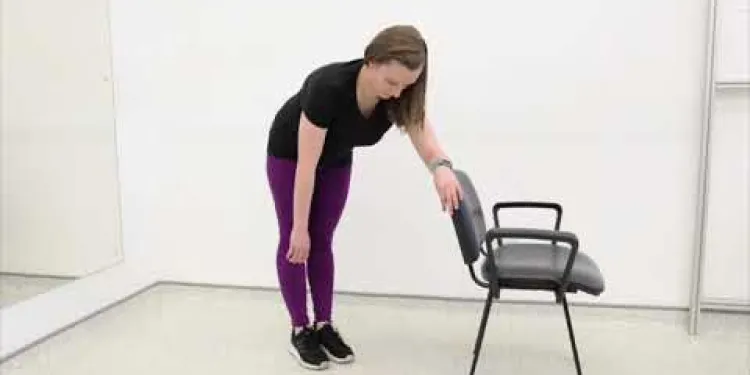
Frozen shoulder Pendular Exercises
Relevance: 19%
-
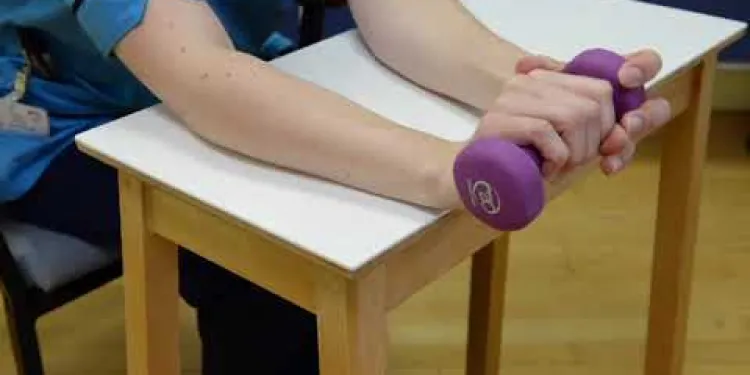
Elbow Eccentric Strengthening Exercise
Relevance: 19%
-

Exercise Routines for Busy Parents
Relevance: 19%
-

Can exercises help with labor preparation?
Relevance: 18%
-

Are there any exercises involved in air physiotherapy?
Relevance: 18%
-

How does exercise benefit pregnancy?
Relevance: 18%
-

Falls Prevention - strength and balance exercises
Relevance: 18%
-

Can exercise influence cortisol levels?
Relevance: 18%
-

Can I do high-impact exercises while pregnant?
Relevance: 18%
-

Can I do abdominal exercises during pregnancy?
Relevance: 18%
-

How to do pelvic floor exercises | NHS
Relevance: 18%
-

Is it safe to exercise outside during a heatwave?
Relevance: 18%
-

What exercises can I do during pregnancy?
Relevance: 18%
-

Can exercise trigger asthma symptoms?
Relevance: 18%
-
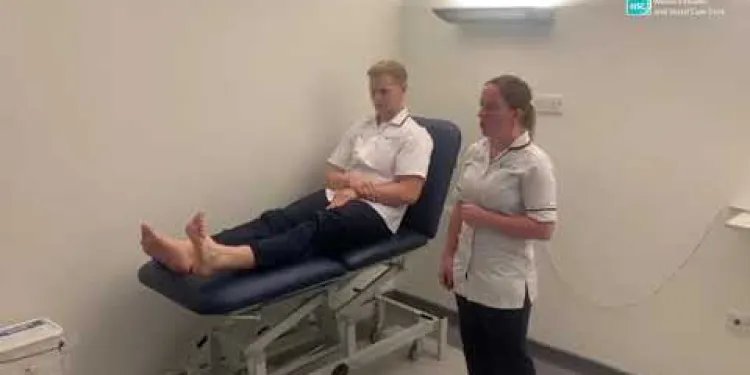
Physiotherapy Exercises following an Ankle Fracture
Relevance: 18%
-
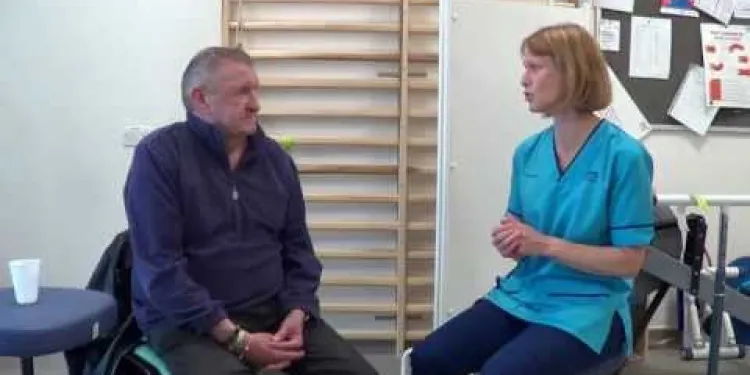
Clearing Your Chest with Breathing Exercises
Relevance: 18%
-
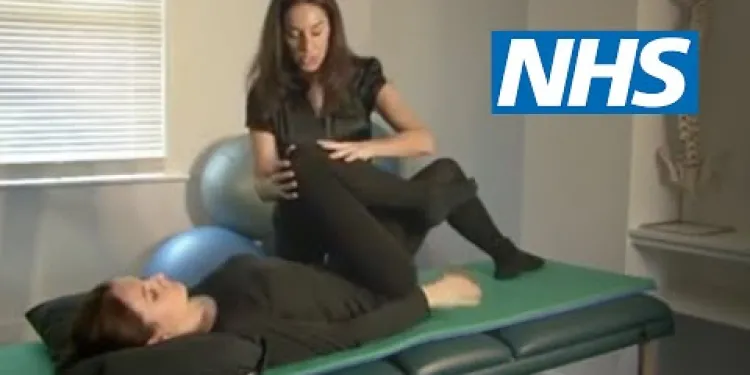
Exercises for sciatica: spinal stenosis | NHS
Relevance: 18%
-

How does exercise impact heart failure?
Relevance: 18%
-

Exercises for sciatica: piriformis syndrome | NHS
Relevance: 18%
-

Can exercise help prevent gestational diabetes?
Relevance: 18%
-

Does physical exercise help people with CFS?
Relevance: 18%
-

How often should I exercise during pregnancy?
Relevance: 17%
-

Are there any exercises to avoid during pregnancy?
Relevance: 17%
-
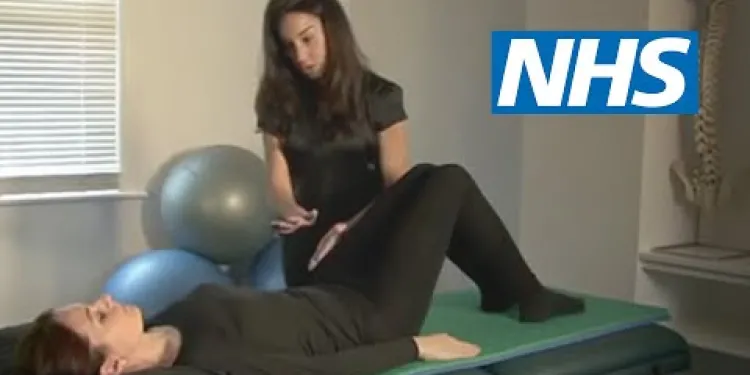
Exercises for sciatica: degenerative disc disease | NHS
Relevance: 17%
-

Can I take exercise classes during pregnancy?
Relevance: 17%
ACL Pre-Operation Exercises: Prepare for a Successful Surgery
Introduction to ACL Pre-Operation Exercises
Anterior Cruciate Ligament (ACL) injuries are quite common among athletes and active individuals. Preparing for ACL surgery involves not only understanding the procedure but also engaging in specific exercises to strengthen the muscles around the knee. These pre-operation exercises can play a crucial role in the recovery process, helping to improve outcomes and reduce rehabilitation time. This guide is designed for residents of the United Kingdom seeking to optimise their readiness for ACL surgery.Importance of ACL Pre-Operative Exercises
Undertaking a regimen of exercises before ACL surgery can yield multiple benefits. Strengthening the muscles, particularly the quadriceps and hamstrings, can provide better knee support during recovery. It also helps improve range of motion, reduce swelling, and enhance overall knee stability. Additionally, being in good physical condition before surgery can reduce the likelihood of post-surgical complications and speed up the healing process.Recommended Exercises
Before starting any exercise programme, it is important to consult with a healthcare professional, such as a physiotherapist, who can tailor exercises to your specific needs and limitations.Quadriceps Strengthening
Quadriceps Sets: Sitting with your leg extended, tighten your thigh muscles and press the back of your knee flat against the floor. Hold for 5-10 seconds and release. Repeat 10-15 times. Straight Leg Raises: Lying flat on your back, bend one knee while keeping the other leg straight. Lift the straight leg to the height of the bent knee. Hold for a few seconds and then lower it back down. Perform 3 sets of 10 repetitions for each leg.Hamstring Strengthening
Hamstring Curls: Standing while holding onto a chair or wall for balance, bend your knee to bring your heel towards your buttocks. Hold for a few seconds before lowering your foot back down. Repeat 10-15 times for each leg.Range of Motion Exercises
Heel Slides: Lying on your back, slide your heel towards your buttocks as far as possible, then slide it back to the starting position. Perform 3 sets of 10-15 repetitions.Balance and Stability Exercises
Single-Leg Stands: Stand on your injured leg while holding onto a stable surface for balance. Try to maintain this position for 30 seconds and gradually increase the duration as your strength improves.Conclusion
Engaging in pre-operative exercises is a proactive step towards ensuring a smooth and speedy recovery post-ACL surgery. By incorporating these exercises into your routine, you can enhance the strength, flexibility, and stability of your knee, thereby improving surgical outcomes. Always consult with a healthcare provider to personalise your exercise plan and follow any specific recommendations they may have. By incorporating these strategies, residents of the UK can approach ACL surgery with greater confidence and preparedness, setting the stage for a successful recovery journey.ACL Pre-Operation Exercises: Get Ready for a Successful Surgery
Introduction to ACL Pre-Operation Exercises
The Anterior Cruciate Ligament (ACL) is a part of your knee. It can get hurt, especially if you play sports. Before you have surgery to fix it, you can do some exercises to make your knee stronger. These exercises help your knee get better faster after the surgery. This guide is for people in the UK to help them get ready for ACL surgery.Why Do ACL Pre-Op Exercises?
Doing exercises before your ACL surgery can help a lot. Making your leg muscles stronger helps support your knee when it heals. It also helps your knee move better, reduces swelling, and makes it more stable. If your body is strong before surgery, you might get better faster and have fewer problems afterward.Exercises to Do
Before you start, talk to a health expert, like a physiotherapist. They can help you pick the right exercises for you.Quadriceps Exercises
Quad Sets: Sit with your leg straight out. Tighten your thigh muscles. Push the back of your knee down to the floor. Count to 5 or 10, then relax. Do this 10 to 15 times. Straight Leg Raises: Lie on your back. Bend one knee and keep the other leg straight. Lift the straight leg to the same height as the bent knee. Hold it up for a few seconds, then put it down. Do this 10 times for each leg, 3 times.Hamstring Exercises
Hamstring Curls: Stand and hold a chair or wall. Bend your knee to lift your heel towards your bottom. Hold for a few seconds, then lower your foot. Do this 10 to 15 times for each leg.Exercises to Help Your Knee Move
Heel Slides: Lie on your back. Slide your heel towards your bottom, then slide it back. Do this 10 to 15 times, 3 times.Balance and Stability Exercises
Single-Leg Stands: Stand on your hurt leg and hold onto something steady. Try to stand for 30 seconds. As you get stronger, try to stand for longer.Conclusion
Doing these exercises before your surgery helps you heal faster later. They make your knee stronger and help it move better. Always ask a health professional for advice on what exercises are best for you. By following this advice, people in the UK can feel more ready and confident for their ACL surgery and recovery.Frequently Asked Questions
What are ACL pre-operation exercises?
ACL pre-operation exercises are physical activities designed to strengthen the muscles around the knee and improve flexibility before undergoing anterior cruciate ligament (ACL) surgery.
Why are pre-op exercises important for ACL surgery?
Pre-op exercises can help reduce recovery time, improve surgical outcomes, and reduce the risk of post-operative complications by strengthening the muscles and increasing flexibility around the knee.
How often should I do these exercises?
Generally, it is recommended to perform these exercises daily or as instructed by your physiotherapist to ensure optimal pre-surgery conditioning.
Can I do these exercises at home?
Yes, most ACL pre-op exercises can be performed at home. However, it is crucial to follow the guidance provided by your healthcare professional to ensure proper technique and avoid injury.
What types of exercises are typically included in an ACL pre-op programme?
Common exercises include leg raises, hamstring curls, quad sets, heel slides, stationary cycling, and balance exercises.
Do I need any equipment for these exercises?
Some exercises may require basic equipment like resistance bands, a stability ball, or a stationary bike. However, many exercises can be performed without any equipment.
How long should I continue these exercises before my surgery?
It is advisable to continue these exercises up until the day of your surgery, unless instructed otherwise by your surgeon or physiotherapist.
Will these exercises be painful?
Some discomfort may be experienced initially, but the exercises should not cause significant pain. If pain persists or worsens, consult your healthcare provider.
Can these exercises help reduce swelling in my knee?
Yes, certain exercises can promote blood circulation and reduce swelling, which may aid in pre-surgery preparation and post-surgery recovery.
Do I need to warm up before starting these exercises?
Yes, a short warm-up period such as a gentle walk or light stretching is recommended to prepare your muscles and joints for the exercises.
How can I ensure I am doing the exercises correctly?
It is best to get initial guidance from a physiotherapist who can demonstrate proper techniques and provide feedback to ensure you are performing the exercises correctly.
Are there any exercises I should avoid before ACL surgery?
Avoid high-impact activities or exercises that place excessive strain on your knee, such as running or jumping, unless advised otherwise by your healthcare provider.
Can these exercises help improve my balance?
Yes, incorporating balance exercises can help improve your stability and coordination, which is beneficial for both pre- and post-operative knee function.
How can I track my progress with these exercises?
Keeping a journal or log of your exercises, noting any improvements in strength or flexibility, and regular check-ins with your physiotherapist can help track your progress.
Will my physiotherapist provide a customised exercise plan for me?
Yes, a physiotherapist can design a tailored exercise programme based on your specific needs, condition, and level of fitness to ensure the best possible outcome.
What exercises can I do before ACL surgery?
Before you have ACL surgery, you can do some exercises to make your leg strong. These exercises help you get better after the surgery.
Here are some exercises you can try:
- Leg lifts: Lie on your back and lift your leg up and down.
- Straight leg raises: Sit with one leg straight and lift it up.
- Heel slides: Sit and slide your heel on the floor to bend your knee.
- Quad sets: Squeeze your thigh muscles while your leg is straight.
You can watch videos or ask a physiotherapist to help you with these exercises.
Remember to take it slow and stop if it hurts. These exercises will help you get ready for surgery and heal faster.
Before having an ACL surgery, it’s good to do some exercises. These exercises help make your knee muscles stronger and more flexible. This can make your knee ready for the surgery.
Why is it important to do exercises before ACL surgery?
Doing exercises before your ACL surgery helps make your leg strong. This can make it easier to get better after the surgery.
Here are some things that can help:
- Watch videos that show you how to do the exercises.
- Ask an adult or friend to help you with the exercises.
- Use simple pictures or drawings to understand the exercises better.
These exercises prepare your body and can make you heal faster.
Doing exercises before your operation can help you get better faster. They can make your surgery help more. These exercises make your muscles strong and help your knee move better. This can stop problems after the surgery.
How much should I do these exercises?
It is good to do these exercises often. Try to do them at least a few times each week.
If you find it hard to remember, you can use a calendar or set a reminder on your phone. Ask a friend or family member to help you remember too.
It is good to do these exercises every day. Your doctor or physio might tell you how to do them. This will help you get ready for your surgery.
Can I do these exercises at home?
Yes, you can do these exercises at home. Here’s how:
- Find a safe, open space where you can move around easily.
- Wear comfortable clothes and shoes.
- Try to follow along with a video or pictures to help you do the exercises correctly.
- If something hurts, stop and rest.
- Ask someone to help if you need it.
Exercising at home can be fun and keeps you healthy!
You can do most exercises for your ACL at home before your surgery. It is very important to listen to your doctor or therapist. They will show you how to do the exercises right. This helps you stay safe and not get hurt.
What exercises are usually part of an ACL pre-op program?
Here are some exercises you might do before ACL surgery:
- Leg Lifts: Lie on your back and lift one leg up. This helps make your leg stronger.
- Knee Bends: Slowly bend and straighten your knee. This keeps your knee moving well.
- Heel Slides: Sit or lie down and slide your heel towards your bottom. This stretches your leg.
- Step-Ups: Step up and down on a small step. This strengthens your leg muscles.
- Balance Practice: Stand on one leg. This helps you keep your balance.
Tools and Tips:
- Use a counting app to help you keep track of your exercises.
- Ask an exercise buddy to do the exercises with you.
- Use a timer to help you do each exercise for the right amount of time.
Here are some exercises you can try:
- Leg Lifts: Lift your legs up and down.
- Hamstring Curls: Bend your knees and bring your feet up to your bum.
- Quad Sets: Tighten the muscles on the front of your thigh.
- Heel Slides: Slide your foot along the floor by bending your knee.
- Riding a Stationary Bike: Pedal on a bike that doesn't move.
- Balance Exercises: Practice standing on one foot.
If you're finding it hard, try to exercise with a friend or listen to fun music. These can make exercises more enjoyable!
What things do I need for these exercises?
You might need some simple tools to do some exercises. These tools can be stretchy bands, a big bouncy ball, or a bike that doesn’t move. But, you can also do lots of exercises without using any tools at all.
When should I stop doing these exercises before my surgery?
Do these exercises until it is time for your surgery.
If you are not sure, ask your doctor.
Here are some tips to help:
- Use a calendar to mark the days you do the exercises.
- Ask a family member or friend to remind you.
- If you feel any pain, tell your doctor.
It is a good idea to keep doing these exercises until the day you have your surgery. But if your doctor or physiotherapist tells you to stop, listen to them.
Will these exercises hurt?
These exercises should not hurt. They might feel a bit hard or make your muscles tired. If you feel pain, stop and talk to a doctor or a helper.
Here are some tips to help:
- Go slow and be gentle with your body.
- Use a mirror to make sure you do the exercises right.
- Ask a friend or helper to watch and help you.
You might feel a bit uncomfortable at first when you do the exercises. But they should not hurt a lot. If it keeps hurting or gets worse, talk to your doctor.
Can these exercises make my knee less swollen?
Yes, some exercises can help get the blood moving and make swelling go down. This can be good before surgery and help you get better after surgery.
Should I get ready before I start these exercises?
Before you start exercising, it is good to get your body ready. This is called warming up. It helps your body get used to moving. Warming up can also stop you from getting hurt. Here are some ways to warm up: - Move your arms and legs gently. - Stretch your muscles a little. - Take deep breaths and move around slowly. Remember, warming up is important. It keeps you safe and helps you exercise better.Yes, it's good to do a warm-up before exercise. You can go for a slow walk or do some easy stretches. This helps get your body ready to move.
If you need help, you can use videos that show you how to warm up. You can also ask someone to do it with you.
How can I make sure I do the exercises right?
Here is how you can check if you are doing exercises the right way:
- Start slow. Practice the moves bit by bit.
- Ask someone to show you the right way.
- Use a mirror to watch yourself.
- Follow simple videos that show how to do it step by step.
- Listen to your body. If it hurts, stop and try again.
Here are some tools you can use:
- A mirror to see yourself.
- Videos or apps that teach exercises.
- Ask a friend or a coach to help.
It is a good idea to ask a physiotherapist for help first. They can show you how to do the exercises the right way and tell you if you need to change anything. This helps make sure you are doing everything safely and correctly.
Are there exercises I should not do before ACL surgery?
Don't do activities that can hurt your knee. This means things like running or jumping. Only do them if your doctor or healthcare provider tells you it's okay.
You can also use things that make it easier, like:
- A support bandage or brace for your knee.
- Doing gentle exercises or stretches.
- Asking someone for help or using apps that guide you.
Will these exercises help me balance better?
Try these exercises to see if you feel steadier. Here are some things that might help:
- Use a sturdy chair to hold onto if you feel wobbly.
- Ask a friend or family member to be with you when you exercise.
- Take your time and go slow.
- Practice a little bit every day.
These steps can make moving easier and safer for you!
Yes, doing balance exercises can help you stay steady and move better. This is good for your knee before and after an operation.
How can I see how I am doing with these exercises?
Write down what exercises you do in a notebook. You can also write if you get stronger or more flexible. You should talk to your physiotherapist often. This will help you see how well you are doing.
Will my physiotherapist make a special exercise plan for me?
Your physiotherapist can make a special exercise plan just for you. They will look at what you need and help you get stronger. You can ask them questions if you don't understand.
Here are some ways to make it easier:
- Ask your physiotherapist to explain things slowly.
- Use pictures or videos to understand exercises better.
- Write down or record the exercises so you can remember them.
Yes, a physiotherapist can make a special exercise plan just for you. They will think about what you need, how healthy you are, and what you can do. This will help you get the best results.
Useful Links
- Ergsy carfully checks the information in the videos we provide here.
- Videos shown by Youtube after a video has completed, have NOT been reviewed by ERGSY.
- To view, click the arrow in centre of video.
- Most of the videos you find here will have subtitles and/or closed captions available.
- You may need to turn these on, and choose your preferred language.
- Go to the video you'd like to watch.
- If closed captions (CC) are available, settings will be visible on the bottom right of the video player.
- To turn on Captions, click settings .
- To turn off Captions, click settings again.
More Items From Ergsy search
-

ACL pre-operation exercises
Relevance: 100%
-

ACL exercises post-operation
Relevance: 58%
-

ACL Brace
Relevance: 50%
-

Neck Exercises
Relevance: 22%
-

Neck Exercises
Relevance: 22%
-

Shoulder Exercises 1
Relevance: 22%
-

Plantar Fascia Loading Exercise (High Load Exercise)
Relevance: 21%
-

Facial exercise programme
Relevance: 20%
-

Knee Care Exercises
Relevance: 20%
-

Exercise in patients with a neuropathy
Relevance: 20%
-

Neck Care Exercises
Relevance: 20%
-

Is it safe to exercise with a cold?
Relevance: 20%
-

Joint School - Hip Exercises
Relevance: 19%
-

Joint School - Knee Exercises
Relevance: 19%
-

Will I be able to engage in physical exercise?
Relevance: 19%
-

Frozen shoulder Pendular Exercises
Relevance: 19%
-

Elbow Eccentric Strengthening Exercise
Relevance: 19%
-

Exercise Routines for Busy Parents
Relevance: 19%
-

Can exercises help with labor preparation?
Relevance: 18%
-

Are there any exercises involved in air physiotherapy?
Relevance: 18%
-

How does exercise benefit pregnancy?
Relevance: 18%
-

Falls Prevention - strength and balance exercises
Relevance: 18%
-

Can exercise influence cortisol levels?
Relevance: 18%
-

Can I do high-impact exercises while pregnant?
Relevance: 18%
-

Can I do abdominal exercises during pregnancy?
Relevance: 18%
-

How to do pelvic floor exercises | NHS
Relevance: 18%
-

Is it safe to exercise outside during a heatwave?
Relevance: 18%
-

What exercises can I do during pregnancy?
Relevance: 18%
-

Can exercise trigger asthma symptoms?
Relevance: 18%
-

Physiotherapy Exercises following an Ankle Fracture
Relevance: 18%
-

Clearing Your Chest with Breathing Exercises
Relevance: 18%
-

Exercises for sciatica: spinal stenosis | NHS
Relevance: 18%
-

How does exercise impact heart failure?
Relevance: 18%
-

Exercises for sciatica: piriformis syndrome | NHS
Relevance: 18%
-

Can exercise help prevent gestational diabetes?
Relevance: 18%
-

Does physical exercise help people with CFS?
Relevance: 18%
-

How often should I exercise during pregnancy?
Relevance: 17%
-

Are there any exercises to avoid during pregnancy?
Relevance: 17%
-

Exercises for sciatica: degenerative disc disease | NHS
Relevance: 17%
-

Can I take exercise classes during pregnancy?
Relevance: 17%


